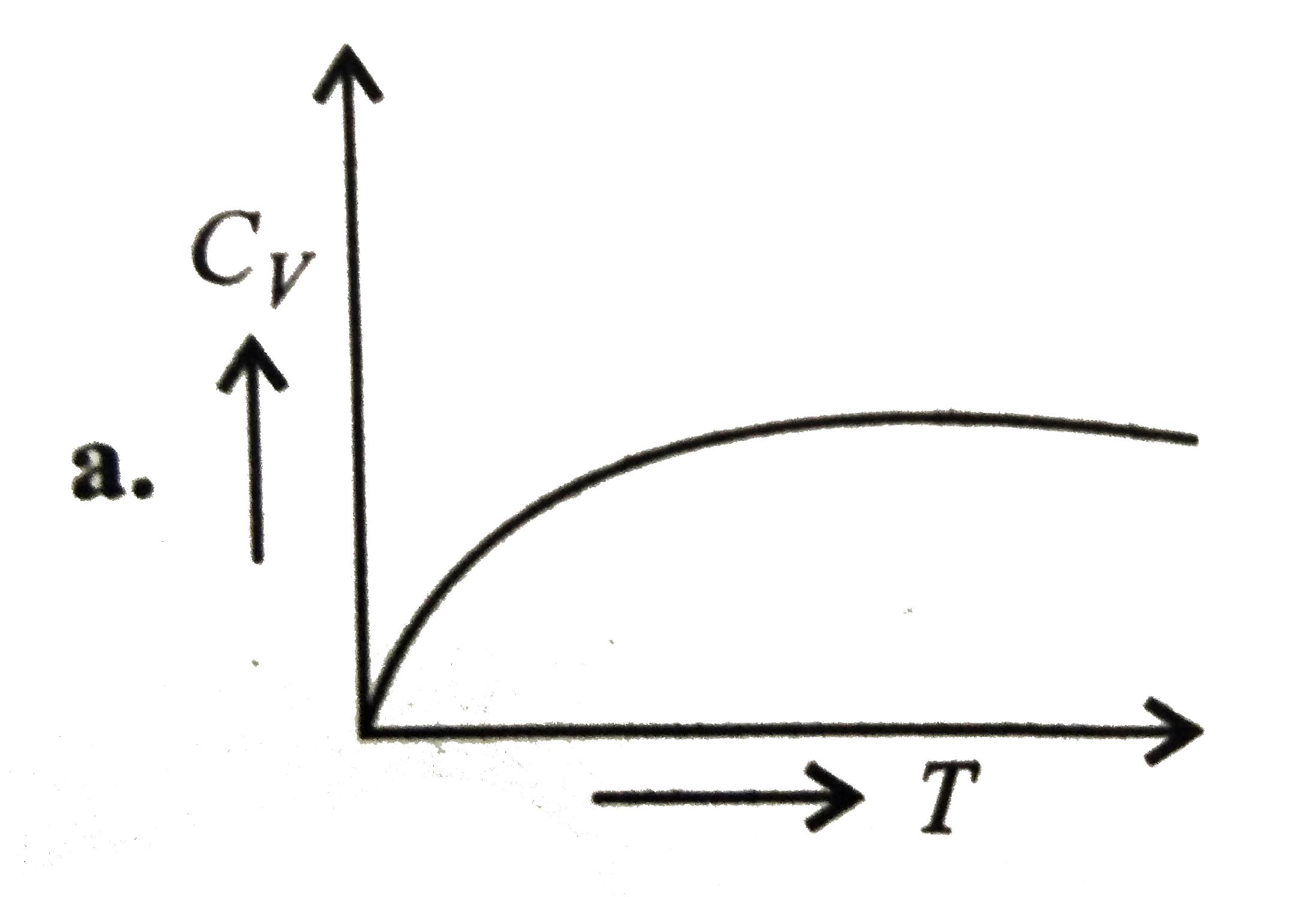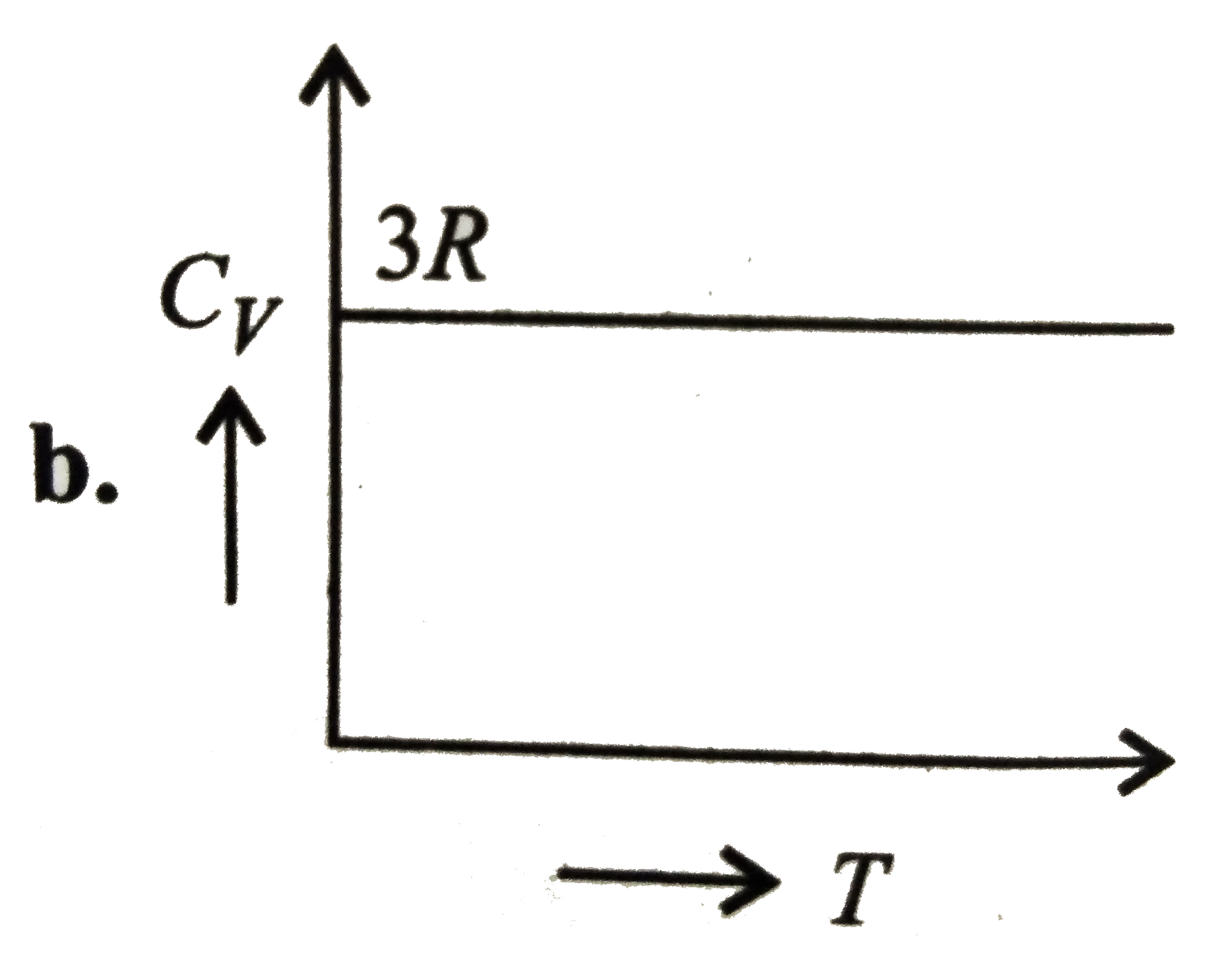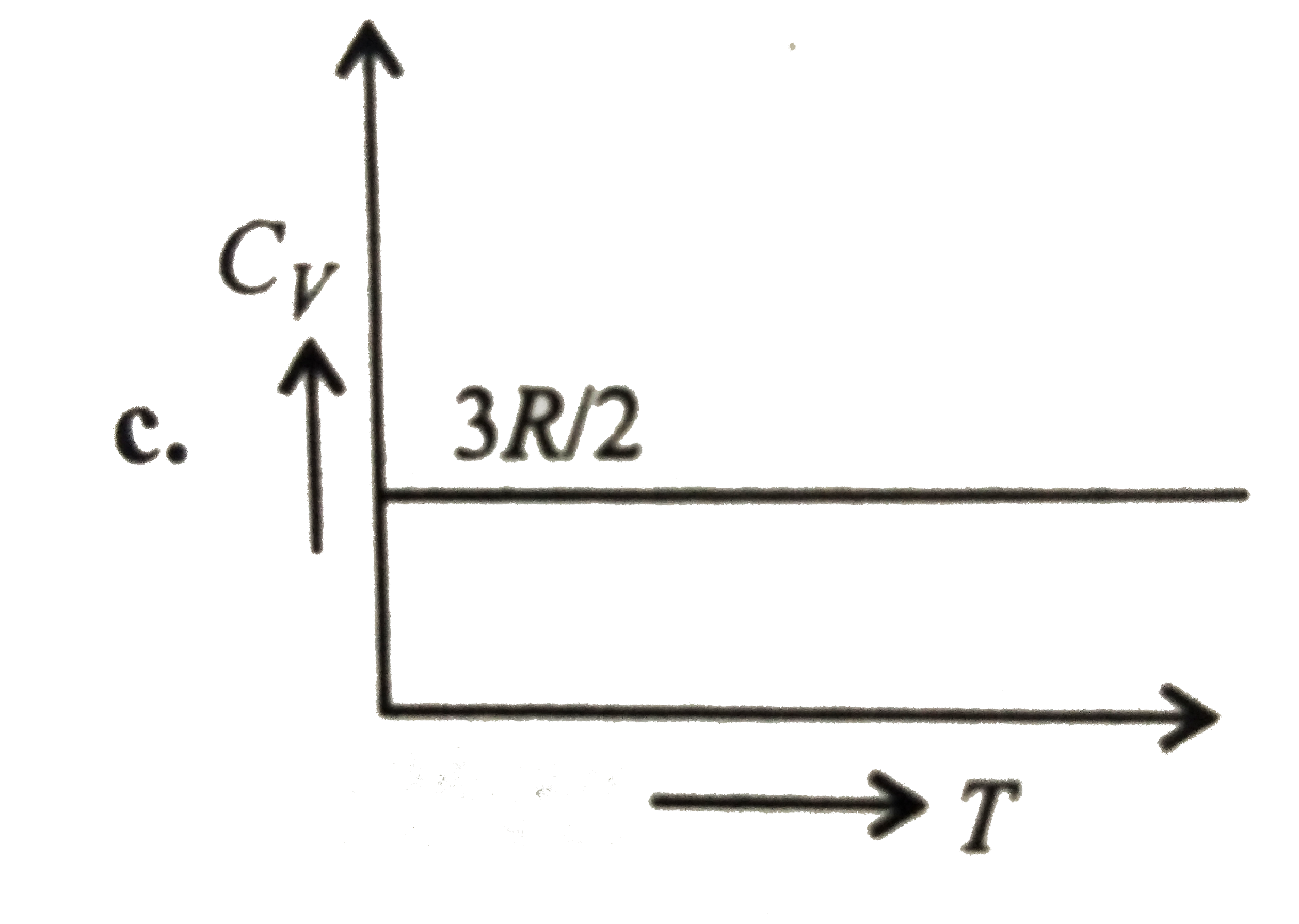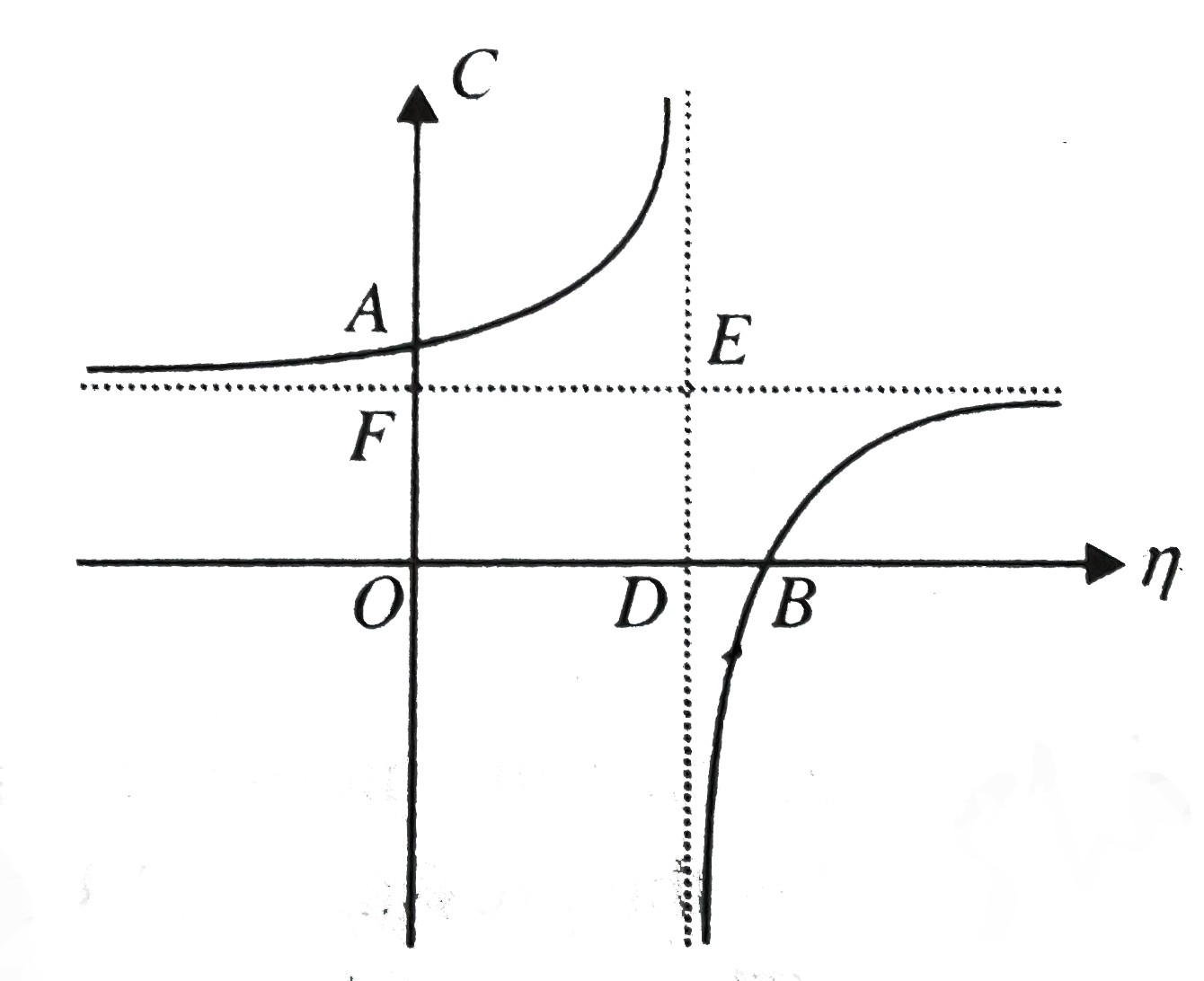Graph for specific heat at constant volume for a monoatomic gas



To solve the question regarding the graph for specific heat at constant volume (Cv) for a monoatomic gas, we can follow these steps:
1. Understand the Concept of Specific Heat at Constant Volume (Cv):
- For a monoatomic ideal gas, the specific heat at constant volume (Cv) is defined as the amount of heat required to raise the temperature of the gas by one degree Celsius while keeping the volume constant.
2. Know the Value of Cv for a Monoatomic Gas:
- The specific heat at constant volume for a monoatomic gas is given by the formula:
Cv=32R
- Here, R is the universal gas constant.
3. Analyze the Temperature Dependence:
- The key point is that for a monoatomic gas, Cv is independent of temperature. This means that as the temperature changes, the value of Cv remains constant.
4. Identify the Graph Characteristics:
- Since Cv is constant and does not change with temperature, the graph representing Cv for a monoatomic gas should be a horizontal line.
- The y-axis will represent Cv, and the x-axis will represent temperature (T).
5. Select the Correct Graph:
- Among the given options, the graph that shows a horizontal line at the value of 32R is the correct representation of Cv for a monoatomic gas.
- In this case, the correct option is Option C.
Final Answer:
The graph that best represents the specific heat at constant volume (Cv) for a monoatomic gas is Option C, which is a horizontal line at the value of 32R.
- For a monoatomic ideal gas, the specific heat at constant volume (Cv) is defined as the amount of heat required to raise the temperature of the gas by one degree Celsius while keeping the volume constant.
- The specific heat at constant volume for a monoatomic gas is given by the formula:
Cv=32R
- Here, R is the universal gas constant.
- The key point is that for a monoatomic gas, Cv is independent of temperature. This means that as the temperature changes, the value of Cv remains constant.
- Since Cv is constant and does not change with temperature, the graph representing Cv for a monoatomic gas should be a horizontal line.
- The y-axis will represent Cv, and the x-axis will represent temperature (T).
- Among the given options, the graph that shows a horizontal line at the value of 32R is the correct representation of Cv for a monoatomic gas.
- In this case, the correct option is Option C.
The graph that best represents the specific heat at constant volume (Cv) for a monoatomic gas is Option C, which is a horizontal line at the value of 32R.
Topper's Solved these Questions
- THERMODYNAMICSBOOK - CENGAGE CHEMISTRY ENGLISHCHAPTER - THERMODYNAMICSEXERCISE - Exercise
1 Videos
- THERMODYNAMICSBOOK - CENGAGE CHEMISTRY ENGLISHCHAPTER - THERMODYNAMICSEXERCISE - Ex 6.1
26 Videos
- STOICHIOMETRYBOOK - CENGAGE CHEMISTRY ENGLISHCHAPTER - STOICHIOMETRYEXERCISE - Archives Subjective
33 Videos
Similar Questions
If the molar specific heat at constant pressure for a polyatomic non-linear gas is x and the molar specific heat at constant volume for a diatomic gas is y, find the value of x/y.
View SolutionThe molar specific heat at constant volume, for a non linear triatomic gas is
View SolutionCalculate the molar specific heat at constant volume of neon gas.
(R=8.314J mol−1K−1)
View SolutionOne mole of monoatomic gas and one mole of diatomic gas are mixed together. What is the molar specific heat at constant volume for the mixture ?
View SolutionThe molar specific heat at constant volume of gas mixture is 13R6. The gas mixture consists of
View SolutionThe heat capacity at constant volume of a monoatomic gas is 35j/K. Find
(a) the number of moles
(b) the internal energy at 0∘C.
(c ) the molar heat capacity at constant pressure.
View SolutionThe heat capacity at constant volume of a monoatomic gas is 35j/K. Find
(a) the number of moles
(b) the internal energy at 0∘C.
(c ) the molar heat capacity at constant pressure.
View SolutionA process in which work perfomed by an ideal gas is proportional to the corresponding increment of its internal energy is described as a polytropic process. If we represent work done by a ppolytropic process by W and increase in internal energy as ΔU then
W∝ΔU
or W=K1ΔU ...(i)
For this process, it can be demonstrated that the relation between pressure and volume is given by the equation
PVη=K2 (constant ) .....(ii)
We know that a gas can have various values for molar specific heats. The molar specific heat 'C' for an ideal gas in polytropic process can be calculated with the help of first law of thermodynamics. In polytropic process process the variation of molar specific heat 'C' with η for a monatomic gas is plotted as in the graph shown.

For a monoatomic gas, the values of polytropic constant η for which value specific heat is negative.
View SolutionFind the molar specific heat of the process p=aT for a monoatomic gas, a being constant.
View SolutionSupposing the distance between the atoms of a diatomic gas to be constant, its specific heat at constant volume per mole (gram mole) is
View Solution
